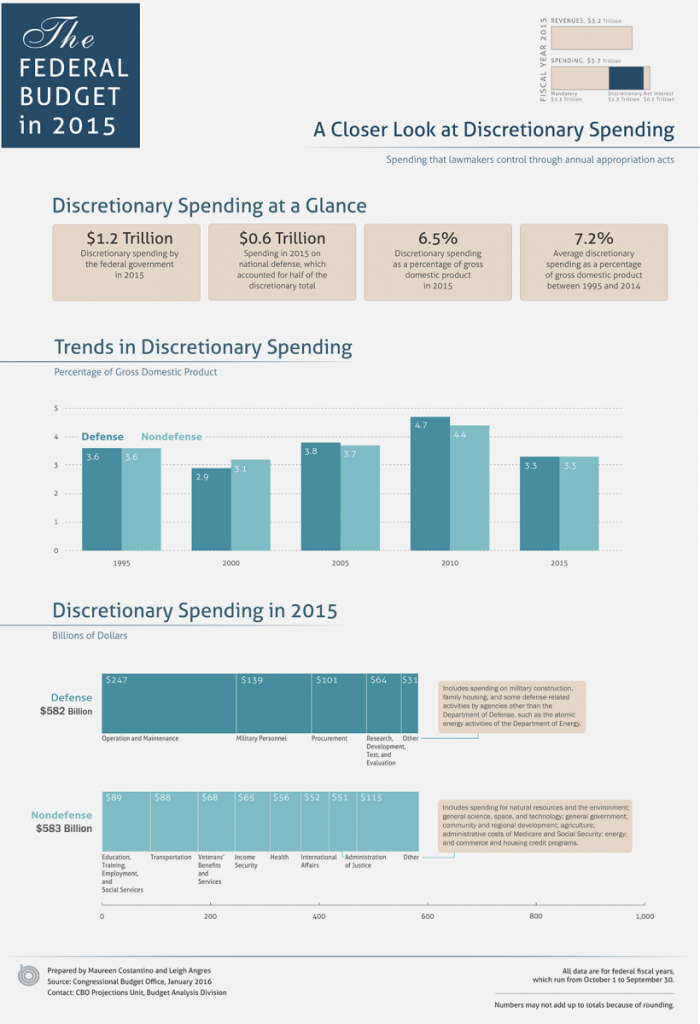According to recent reports, the Pentagon’s fiscal year 2017 budget request is set for release on February 9th. While work continues on the request, Secretary of Defense Ashton Carter will apparently provide a preview of what it will look like “in the coming days.” This seems like an opportune time then for a visual representation of what defense spending looked like in 2015, relative to the rest of the budget.
Fortunately, the Congressional Budget Office recently released the infographic below providing such an illustration.
As the graphic shows, of the $1.2 trillion in discretionary spending last year, $582 billion went to defense. That amount is roughly equivalent to the $583 billion in non-defense spending. The remainder of the federal budget is dedicated to mandatory entitlement spending.
The graphic illustrates defense-related spending outside of the Department of Defense—such as Department of Energy stewardship of the U.S. nuclear arsenal—but there is an interesting omission. It does not differentiate between the Pentagon’s “base” budget and Overseas Contingency Operations (OCO) funding, which was around $64 billion last year.
OCO has been a source of controversy for several years now. Supplemental funding for the wars in Iraq and Afghanistan quickly became a “slush fund” for the military services to find money outside the regular budget process as the definition of what counted as “war funding” expanded in the mid-2000s. Ironically, this practice took place as the base Pentagon budget was reaching record highs on its own.
In a recent interview with Reason TV, Gordon Adams—a retired American University professor, former national security director at the Office of Management and Budget, and well-respected defense budget analyst—described the affect this practice has. Adams argues,
Pentagon civil servants and admirals and generals are no more stupid than anybody else. They figured out over time that this was great, if [they] could not get some of the stuff they wanted in the regular budget, well [they] put it in the extra budget… [OCO] completely destroys budget discipline, saying ‘there’s always more money’ simply conveys the message to the department ‘you don’t have to make choices, you can always find a way to raise money for the things you want to do.’
It is useful to keep this practice in mind with reports suggesting that the Department of Defense will claim a $15 billion shortfall between its plans and what is allowed under next year’s Budget Control Act spending cap, which was already revised upward this fall to avoid a government shutdown.
Watch the entire Reason TV interview with Professor Adams here.
